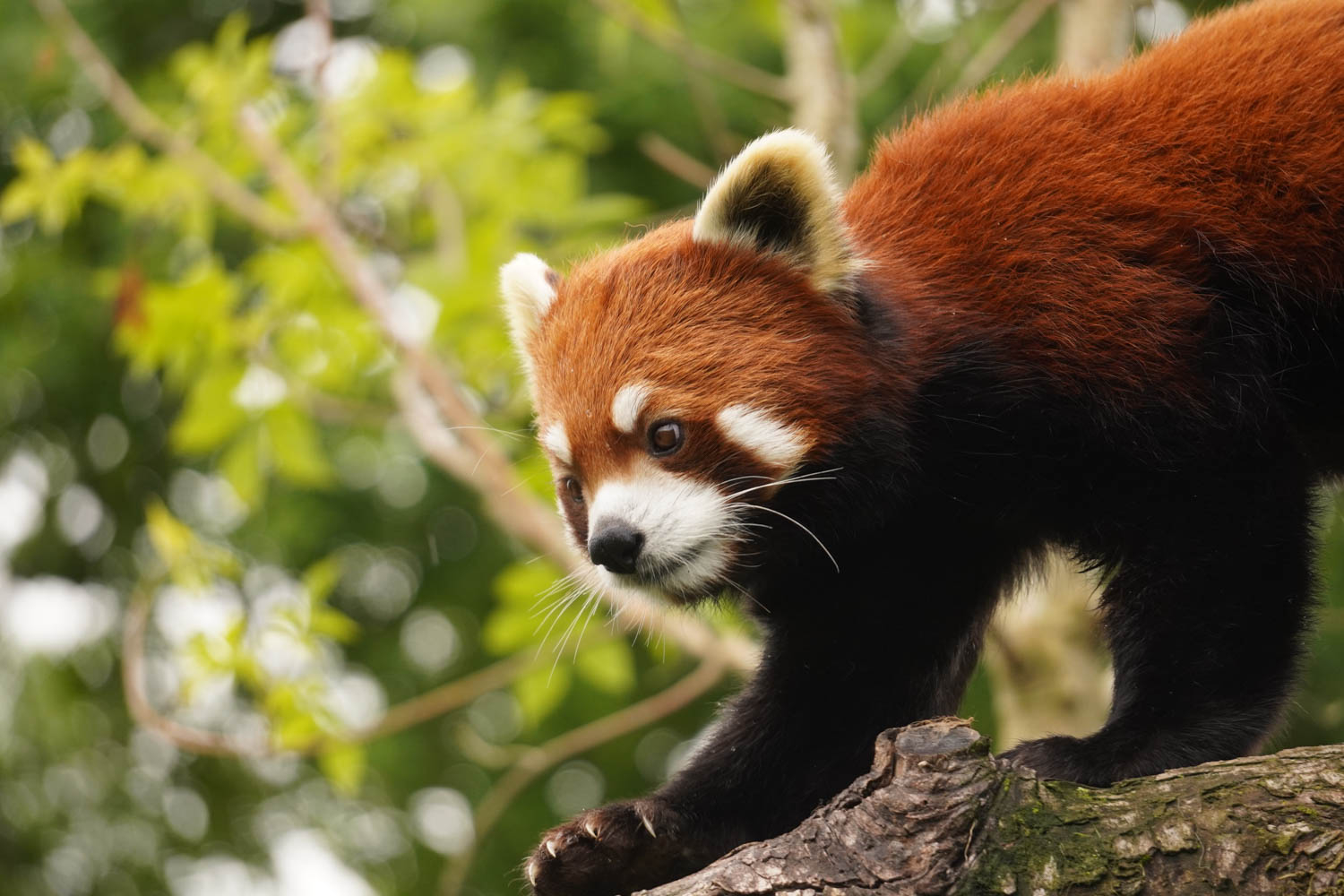Have you visited the Greater Vancouver Zoo recently? If so, you might have seen our Red Pandas, Arun, and Sakura, frolicking in their enclosure… or more likely they were having an afternoon snooze! Either way, you probably stopped to admire them and couldn’t help but exclaim “OMG! They’re so cute!”
We agree! (This is an undisputed fact). But WHY are they cute? What makes these animals visually appealing to us and entices this uncontrollable response?
Research suggests that this preference is ingrained in our minds and is a learned response that humans have developed to ensure the survival of our species (Borgi et al., 2014). Now you might be thinking, that seems a bit extreme! Think about animals that you consider cute. Puppies? Kittens? Ducklings? What’s something that all these animals have in common? They’re babies! Humans have developed a nurturing response to our own offspring, and in turn, that response extends to animals that have similar infantile characters. Often, these animals are small, have proportionally large eyes compared to their head size, a small mouth, chubby cheeks, or display a general sense of helplessness. These infantile features were defined as “The baby Schema” by Lorenz (1943) and have been a topic of extensive investigation since. Even from a young age, children show an affinity for infantile animals, as studies have shown that kids stare longer at cute animals than less cute animals (Borgi et al., 2014). This makes sense, the representation of animals in children’s media is often animated with exaggerated features. Growing up, we continue to associate big eyes with a positive or warm emotional nostalgia. Maybe our Red Panda’s, with their fluffy bodies and expressive eyes, remind us of these characters?
This nurturing relationship between human parents and offspring has become vital for the continuation of our species (Tyley, 2015). Unlike some animals, human children are not self-sufficient when they are born, in fact, humans take approximately 18 years to fully develop, although some research found that maturity isn’t reached until later into our 20’s (Sawyer et al., 2018). Because of this, we need to ensure that our offspring are cared for until they are at an age where they can walk, eat, and communicate on their own. Our brain prompts us to do this automatically, releasing dopamine and oxytocin, hormones that are attributed with happiness, when we see an infant… even if it’s not our own. Scientists believe that our brain releases these hormones to ensure care is provided for our young. The same applies to our adorable animal friends. When we see a cute animal, our natural instinct is to care for it, pick it up, give it attention, etc. and this creates a pleasant emotional state for us. It is worth noting that all non-domesticated animals should not be handled and should be given respectful distance (as challenging as it might be for us).
Sometimes this cute response is overwhelmingly strong, and you just want to squeeze the animal. If you’re familiar with Dreamworks’ animated Despicable Me franchise, or you just like internet memes, you probably have quoted the infamous “It’s so fluffy I’m gonna die!” line once or twice… or at least found that scene from the movie extremely relatable. This response is actually normal and also has a neurological basis. When you get the overwhelming desire to squeeze, smother, or even bite something adorable it's known as “cute aggression” (Stavropoulos & Alba, 2018). This response is dimorphous, meaning two forms of the same thing. We experience strong emotions of one kind but express those emotions in the opposite way; just like when we cry because we’re extremely happy. It’s like our brain is attempting to regulate our emotions when we experience too much cute all at once.



